Table of Contents
ToggleIn the fast-paced world of online shopping, Google Smart Shopping is like having a personal shopping assistant who knows exactly what you need—before you even do. It combines the power of machine learning with the vast reach of Google’s advertising network, helping businesses showcase their products to the right customers at the right time. Who wouldn’t want that kind of magic?
What Is Google Smart Shopping?
Google Smart Shopping is an advanced advertising solution designed for online retailers. It automates campaign management and optimizes ad placements across Google’s extensive advertising network. Instead of manually selecting keywords and adjusting bids, this tool leverages machine learning to determine the best strategies for reaching potential customers.
It showcases products through various formats, including display ads, search ads, and YouTube ads. Smart Shopping campaigns analyze user behavior, maximizing visibility where it’s needed most. Retailers benefit from a streamlined process that combines product listing ads and dynamic remarketing, enhancing customer engagement.
Using Smart Shopping improves the likelihood of conversions since ads appear to users actively searching for relevant products. Advertisers set specific goals, such as maximizing conversion value or increasing return on ad spend (ROAS). The system automatically adjusts bids based on real-time data, enhancing the efficiency of the ad spend.
Retailers can access performance insights through the Google Ads dashboard. This feature allows for the monitoring of key metrics like clicks, impressions, and conversion rates. With ongoing optimizations, Smart Shopping campaigns can surpass traditional shopping campaigns in effectiveness.
Incorporating Smart Shopping into an eCommerce strategy offers significant advantages. Increased exposure to matched audiences leads to improved sales and revenue. Understanding the potential of this tool allows retailers to expand their reach and attract high-intent shoppers effectively.
Key Features of Google Smart Shopping


Google Smart Shopping offers several features that enhance the online retail experience. It leverages automation and targeted advertising to maximize results.
Automated Bidding Strategies
Smart Shopping employs automated bidding strategies that optimize bids based on performance data. These strategies utilize machine learning to analyze historical data and user behavior. Multiple bidding options include maximizing conversion value and achieving a target return on ad spend (ROAS). Retailers don’t need to manage bids manually, allowing them to focus on other aspects of their business. Enhanced bid adjustments occur in real time, ensuring the best placement opportunities are seized.
Ad Formats and Placements
Smart Shopping supports diverse ad formats and placements across Google’s extensive network. Formats include display ads, search ads, and YouTube ads. The system automatically tests various creative elements to identify the best-performing combinations. Such flexibility attracts a wider audience by showcasing products in multiple contexts. Retailers benefit from increased visibility and engagement through effective placements across multiple platforms.
Benefits of Google Smart Shopping
Google Smart Shopping provides numerous advantages for online retailers. This tool boosts sales by leveraging advanced technology and optimization strategies.
Increased Visibility
Smart Shopping enhances visibility across Google’s extensive advertising network. Retailers can showcase ads on various platforms, including Google Search, YouTube, and display networks. This broad reach allows businesses to engage with potential customers at multiple touchpoints. Additionally, the automated ad placements maximize exposure, ensuring products appear when users search for relevant items. Regular updates to creative combinations test which elements resonate with audiences, leading to improved click-through rates. With this increased visibility, retail brands can capture consumer attention effectively.
Enhanced Targeting Capabilities
Targeting capabilities improve significantly with Google Smart Shopping. The system utilizes machine learning to analyze user behavior and preferences. By assessing historical performance data, it identifies potential customers more accurately. This enables retailers to focus their marketing efforts on the most promising leads. Furthermore, Smart Shopping automatically adjusts bids based on real-time insights, ensuring optimal ad placement for each audience segment. Retailers benefit from tailored campaigns designed to increase conversion rates, ultimately leading to higher return on ad spend. Enhanced targeting transforms advertising efforts into more efficient marketing strategies.
Setting Up Google Smart Shopping
Setting up Google Smart Shopping involves creating a Merchant Center account and configuring the campaign effectively to maximize results.
Creating a Google Merchant Center Account
Start by visiting the Google Merchant Center website. Enter essential business information, including the store name, website URL, and contact details. Next, verify and claim the website to gain full access to Google tools. After that, upload product data using a data feed, ensuring it meets Google’s specifications. Categories, titles, and product images need accuracy for optimal performance. Once completed, the Merchant Center dashboard provides insights into product listings, allowing retailers to make necessary adjustments for better visibility.
Configuring Your Smart Shopping Campaign
Begin by logging into the Google Ads account. Select “Campaigns” on the left-hand menu and click the plus button to create a new campaign. Choose “Sales” as the campaign goal and select “Smart Shopping” as the campaign type. Next, configure settings by naming the campaign and setting a daily budget. Utilize custom tracking codes to monitor performance more effectively. Once these settings are in place, define targeting options based on demographics and user behavior. Finally, implement smart bidding strategies to enhance ad performance and achieve desired goals efficiently.



